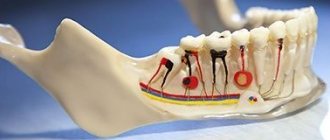The structure of the formations, their size and type of contents vary, depending on the location and duration of the onset of the pathological process. They are true (inside lined with epithelial cells) and false (without lining). Based on the type of appearance, neoplasms are divided into:
- retention (usually formed due to a disruption in the process of outflow of secretions in tissues and organs, occurring in the mammary glands, uterus, cervix, ovary, etc.);
- ramolitic (usually found in the ovaries, brain and spinal cord, can form in areas of tissue necrosis, for example after a stroke);
- parasitic (appears in different organs, is the shell of the parasite);
- traumatic (due to bruises);
- dysontogenetic (usually congenital, include different tissues of the embryo);
- tumor (formed due to metabolic disorders, have cavities filled with physiological fluids).
Types of Ovarian Cysts and Treatments
There are functional and organic ovarian cysts. The former can be treated with medication, the latter can only be removed surgically.
Functional cysts:
- Follicular cyst
. This is a benign, single-chamber neoplasm filled with fluid, which can reach from 2 to 10 cm in diameter. - Luteal cyst (corpus luteum cyst)
. Similar to a follicular cyst in appearance and size.
Reasons for development:
hormonal disorders, serious stress, excessive physical activity, inflammatory processes in the pelvic organs
Danger:
cyst rupture, cyst pedicle torsion
Type of treatment:
observation for 3 menstrual cycles, conservative treatment with dydrogesterone drugs and oral contraceptives. Functional cysts completely disappear within 2–3 months if the gynecologist’s recommendations are followed. If the cysts do not shrink within 60 to 90 days, they are removed surgically.
Organic cysts:
Endometrioid cyst.
A single-chamber neoplasm filled with menstrual blood. The size can reach from 5 to 20 cm. They often grow on both sides and increase from one menstruation to the next.
Reasons for development:
ovarian endometriosis
Danger:
development of infertility, adhesions in the pelvic organs, risk of malignancy
Dermoid cyst.
A neoplasm up to 15 cm in size, filled with mucus, fat and other tissues.
Reasons for development:
disruptions in the regulation of embryonic cells
Danger:
inflammation of the cyst, which can result in peritonitis
Paraovarian cyst.
A single-chamber tumor with thin walls of a large size - 13–30 cm. It grows not in the ovary, but next to it from the ligaments between the ovaries and the uterus.
Reasons for development:
malfunction of the thyroid gland, severe overheating, frequent abortions, frequent inflammatory processes in the pelvic organs, incorrect use of hormonal drugs
Danger:
suppuration and rupture of the cyst capsule
Mucinous cyst.
Single- or multi-chambered formation, the contents of which are thick mucus. It can reach very large sizes - from 20 cm or more.
Reasons for development:
chronic inflammation of the ovaries, ovarian dysfunction, genetic predisposition, serious hormonal imbalances during menopause
Danger:
torsion of the cyst stalk and, as a consequence, tissue necrosis
Cystadenoma (serous cystadenoma, true cyst).
Benign 1-, 2- or 3-chamber formation with a diameter of up to 15 cm, filled with yellow liquid.
Reasons for development
: STDs, pathological changes in hormonal levels, heredity, early puberty
Danger
: ovarian rupture, disruption of nearby organs, relapses, malignancy
Organic cysts cannot be cured with hormonal drugs; they are removed endoscopically or laparoscopically. And the faster the operation is performed, the less damage the cyst will cause to the woman’s health. Very often they are the cause of infertility in women.
Cystoma
Cystoma is an enlarging tumor, often having a multi-chamber cavity. Growth occurs both due to the accumulation of fluid inside the cavity and as a result of the division of cells that make up the formation. This tumor is real. Can be benign, malignant or potentially malignant.
There are groups of patients whose risk of developing cysts is especially high:
- patients with chronic diseases of the genital area, as an addition to complex therapy, such women are recommended to use hormonal contraceptives;
- patients with hormonal disorders: lack of pregnancy (hormonal infertility), disrupted menstrual cycle;
- patients who have undergone ovarian surgery, incl. cystectomy;
- Bad heredity – endometriosis and ovarian tumors in the family;
- Patients with breast cancer;
- Women who have had a pathological pregnancy.
There are difficulties in finding screening - identifying certain signs in many patients. It is necessary to conduct an in-depth examination of women if there is a formation larger than 3 cm on the uterine appendages during a two-hand examination.
Symptoms of an ovarian cyst
- Frequent pain in the lower abdomen. Aching and nagging pain that intensifies with physical activity or after sexual intercourse.
- Increase in abdominal volume in the lower part.
- Sensation of a foreign body in the ovarian area.
- Cycle disorders - delayed menstruation, amenorrhea
- Painful menstruation.
- Uterine (not menstrual) bleeding.
- Nausea, weakness, dizziness.
- Problems with stool.
- Consequences for the female body
An untreated ovarian cyst can lead to serious consequences, such as infertility and malignancy of the tumor. Hormonal disruptions in a woman’s body provoke gynecological diseases, which can only be treated with long-term and carefully planned treatment by a doctor.
In some cases, an overgrown cyst disrupts the functioning of internal organs - the bladder and intestines, causing their diseases.
Of particular danger is torsion of the cyst stalk and its rupture, as a result of which the woman requires emergency surgery. When a cyst ruptures, its contents enter the abdominal cavity and can cause peritonitis, and in the case of torsion of the cyst leg, tissue necrosis develops, and this requires removal of the ovary itself along with the cyst.
Lead tactics
- Surgery for a malignant ovarian tumor.
The uterus and cervix, appendages, as well as the greater omentum are removed. Removing the oil seal is important because... In some cases, it contains micrometastases. In addition, the omentum promotes the production and accumulation of ascityl fluid.
- Surgery for a benign tumor
Adnexectomy is performed - removal of appendages. Simultaneously with surgical treatment:
- the internal lining of the formation is examined in detail for malignant growths;
- Histological examination is performed.
A modern approach to diagnosing and treating cysts and other diseases of the female genital area is offered by gynecologists at the RAS clinic in Moscow. Here you can undergo a preventive examination by a gynecologist and have a pelvic ultrasound performed. You can make an appointment for a consultation on the website or by calling the numbers provided.
Prevention
The best prevention for the development of ovarian cysts is periodic examinations by a gynecologist and a transvaginal ultrasound to assess the condition of all organs of the female reproductive system. Every six months, every woman needs to visit a gynecologist to avoid the development of not only cysts, but also other diseases, including cancer.
Timely consultation with a doctor helps to identify the disease at the earliest stages and begin treatment immediately.
In addition, a woman should avoid excessive stress and sports activities, which disable the hormonal system and can trigger the development of ovarian cysts. Take care of your health, and if unpleasant symptoms appear, trust a specialist.
Gynecologists at MC “Health” are ready to help patients with any problems in maintaining women’s health. An ovarian cyst of any kind is not a death sentence. Our specialists will conduct a full examination, determine the type of cyst and prescribe appropriate treatment as soon as possible.
Leading specialists in the treatment of uterine cysts in the Southern Federal District
Ermolaeva Elvira Kadirovna is a well-known and recognized specialist in the North Caucasus in the treatment of cervical cysts, nabothian cysts. She is a gynecologist, ultrasound doctor, physiotherapist-resortologist. Elvira Kadirovna is approached by women who want to improve the aesthetics of the genital organs, reduce the size of the vagina and refresh intimate relationships from all regions of Russia and foreign countries.
Ermolaev Oleg Yurievich Candidate of Medical Sciences, operating gynecologist with 25 years of successful experience in treating cervical cysts. Able to see relationships that elude others.
Shchepkin Petr Sergeevich Gynecologist, specialist in the treatment of cervical cysts, nabothian cysts. Experienced ultrasound doctor.
About the doctors of the Clinic in detail...
| INTERNATIONAL RECOGNITION of the reputation and achievements of the Women's Health Resort Clinic in the development and implementation of effective and safe treatment methods and the quality of medical services provided is the AWARDING of the Women's Health Resort Clinic in Pyatigorsk with the SIQS International QUALITY CERTIFICATE in the field of medicine and healthcare. International Socratic Committee, Oxford, UK and Swiss Institute for Quality Standards, Zurich, SWITZERLAND. |
The resort clinic for women's health operates both for paid services and in the voluntary health insurance system.
We work seven days a week and on holidays:
Monday - Friday from 8.00 to 20.00, Saturday, Sunday, holidays from 8.00 to 17.00.
Treatment of cervical cysts by appointment by multi-channel phone 8 (800) 500-52-74 (toll-free within Russia), or +7, or [email protected]
| ONLINE information about the treatment of uterine cysts can be found at: [email protected] REGISTER ONLINE for treatment of cervical cysts here. SIGN UP online for uterine cyst removal here. Buy coursework by phone +7 (928) 022-05-32 or here. |
Make an appointment with a gynecologist
The spa clinic for women's health facilitates the accommodation and accommodation of women, women with children and couples during examination and treatment.
Read more about the living conditions and transfer from Mineralnye Vody airport and Pyatigorsk railway station in the article “Accommodation”.
If you need to book accommodation, please coordinate your arrival date no later than 7 days in advance.
We are at your FULL DISPOSAL if you have any doubts or wishes.
Ultrasound
The most convenient and informative method for diagnosing ovarian cysts is ultrasound, which allows you to determine the presence of a cyst in 80-100% of cases. Ultrasound examination of the ovaries is safe even during pregnancy.
There is transvaginal access when. a special sensor is inserted into the vagina, and due to the proximity to the sensor, the uterus and appendages become easily accessible for visualization. This method is used most often and easily identifies cystic ovarian formations of almost any location. But there are situations when the cyst is located above the uterus and it is not always possible to see it transvaginally. In such cases, transabdominal access is used (through the anterior abdominal wall).
The most correct and complete will be considered to be an ultrasound examination of the pelvic organs using both approaches: through the vagina and through the anterior abdominal wall.
Causes of pathology
The exact causes of this gynecological disease have not been fully established. Doctors cannot explain why an ovarian cyst develops during menopause - a period when reproductive function fades and the appendages cease to function fully. However, experts were able to identify a number of predisposing factors contributing to the onset of the disease:
- numerous abortions, miscarriages, premature births;
- chronic infectious and inflammatory pathologies of the genitourinary system;
- complicated childbirth;
- previous surgical intervention on the pelvic and abdominal organs;
- endocrine disorders such as hypothyroidism, adrenal insufficiency;
- uncontrolled use of hormone-containing drugs that affect a woman’s hormonal levels;
- early menopause - up to 40 years;
- refusal to become pregnant at fertile age.
Computed tomography (CT) and magnetic resonance imaging (MRI)
Computed tomography is a layer-by-layer radiography that allows you to see a three-dimensional image of organs. Contraindicated during pregnancy. It is rarely prescribed for ovarian cysts, as it gives a high radiation dose to the reproductive organs.
Magnetic resonance imaging (MRI) is a test using a high-intensity magnetic field that does not use x-rays. Using MRI, you can obtain three-dimensional, exceptionally high-definition images of the ovaries and other pelvic organs.
MRI can be used as an additional research method in complex clinical situations, when ultrasound alone is not enough and/or there is a suspicion of malignant transformation of an ovarian tumor, as well as to clarify the localization of the process, the extent of its spread and the relationship with neighboring organs in the presence of an adhesive process. Most often, MRI is prescribed before surgical treatment of cysts.
FAQ
During the examination, I was diagnosed with an ovarian cyst, what should I do if I plan to get pregnant?
The presence of a follicular cyst can interfere with pregnancy, since the hormone estradiol secreted by the cyst prevents the growth of a new follicle. In addition, a follicular cyst is formed from a follicle that has not ruptured, which means there was no ovulation. In this situation, you need to understand the reason for the lack of ovulation, then further tactics will be clear, however, your attending physician must clarify the nature of the cyst and determine further tactics.
Is it possible to cure a cyst with folk remedies?
Folk remedies do not belong to evidence-based medicine, and therefore cannot be recommended for use.
Womenfirst
- Gynecology: national guide / ed. G. M. Savelyeva, G. T. Sukhikh, V. N. Serov, V. E. Radzinsky, I. B. Manukhin. — 2nd ed., revised. and additional - M.: GEOTAR-Media, 2021. - 1008 p.
- Clinical protocols (gynecology)/ A.A. Schmidt, A.A. Bezmenko, D.I. Gaivoronskikh. – St. Petersburg: SpetsLit, 2021. – 143
- Ultrasound gynecology: course of lectures: in two parts / M.N. Bulanov. – 4th ed. – M.: Vidar-M Publishing House, 2017
- Atlas of ultrasound diagnostics in gynecology / T.M. Umarov, L.T. Khamidova. – M.: MEDpress-inform, 2021. – 320 p.: ill.
RUS2132955 from 04/08/2020
Stages of development
In its development, a bone tissue cyst goes through 3 stages:
- Active (osteolysis phase). It lasts about 1 year and is accompanied by an increase in the size of the tumor, the appearance of swelling and other symptoms, and an increased risk of pathological fractures.
- Passive (demarcation phase). Lasts 6-8 months. The cavity gradually decreases in size, mainly due to compaction of the peripheral part of the bone. Symptoms gradually decrease.
- Regenerative (recovery phase). It occurs on average 2 years after the onset of the pathology. There are no symptoms, but there is still an increased risk of fracture because there is a residual cavity or limited area of osteosclerosis (hardening of the bone that reduces its elasticity and resistance to stress).










